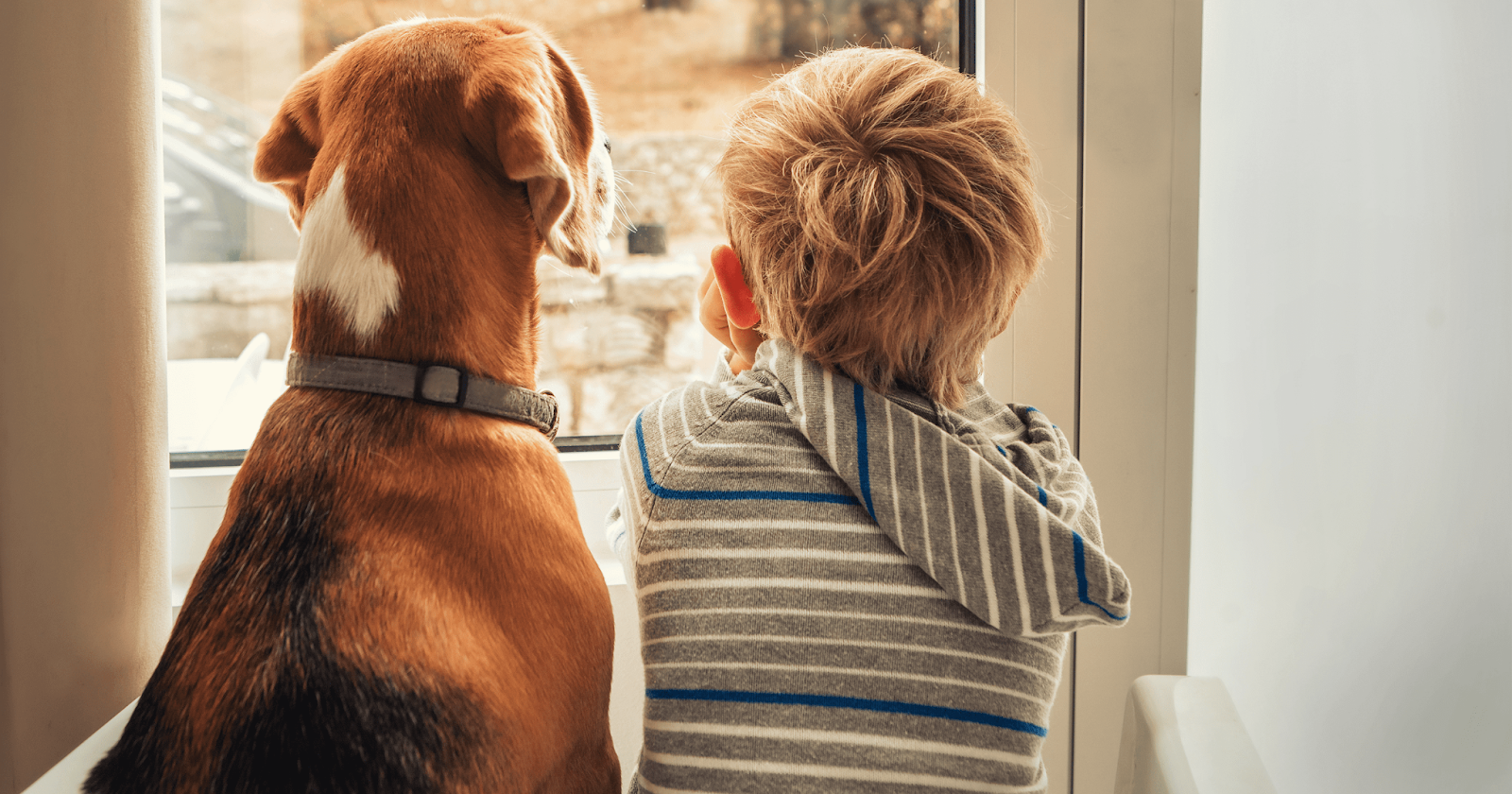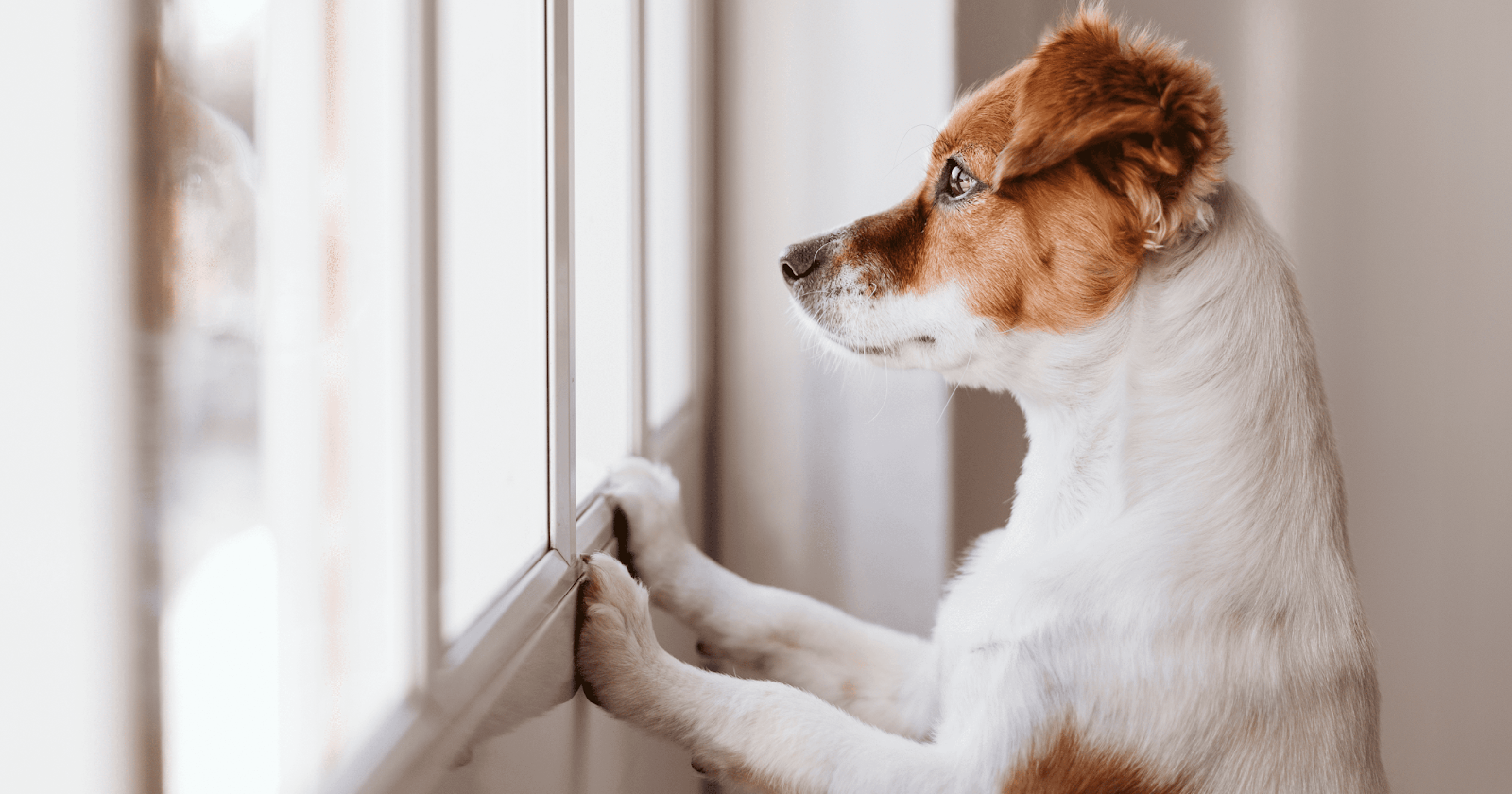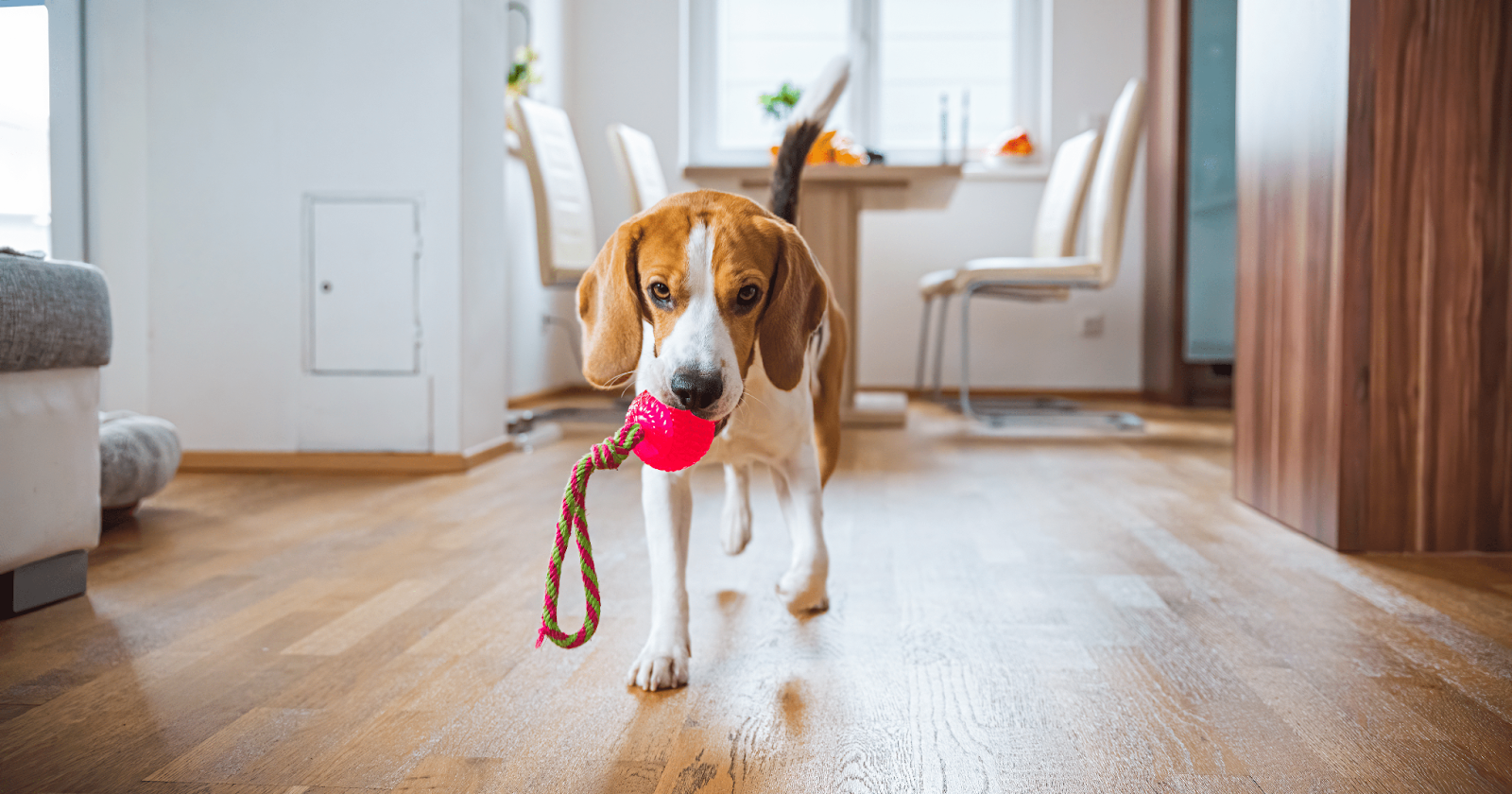Whether you need to leave the house during the day, are busy visiting friends, enjoying restaurants or just out for a short time – it’s important to help your pooch stay calm and occupied when you are out.
Different dogs have different abilities to cope with time alone. For example, if your dog is used to you going out regularly as part of their routine, they may find periods of time alone easier than dogs who are used to your presence all day, every day. Dogs that were adopted during the pandemic for example, may need a little more help and encouragement than others!
Remember too that a bored dog will make their own fun! However, you can avoid chewed furniture and slippers by helping them adjust to being home alone with planned activities to keep them occupied.

13 activities to help your dog when home alone
It’s important to introduce your dog slowly to being left alone for periods of time. Building it up gradually is the best way to support your dog through the transition.
1. Make sure that they have a comfy bed or doggy den that they know is a safe space for them to be in. Also, make sure that they have plenty of space to wander around as well as plenty of water.
2. Try an ADAPTIL Calm Home Diffuser to provide reassurance whilst your dog is home alone. ADAPTIL is clinically proven to create a reassuring environment at home and is recommended by vets to help comfort dogs through challenging situations.
3. Give them plenty of exercise before you leave – a good walk will not only give them the opportunity to go to the toilet, it will burn off energy and may mean they might sleep while you are away.
4. When you leave, try to prepare in advance so that you don’t have to rush, and you can leave calmly, without a fuss.

5. Help your dog to understand that being alone can be fun:
- Find a toy that your dog associates with having a fun time on their own (put the toy away when you are back so there are certain toys your dog can expect when they are alone).
- This can be a KONG toy which contains some of their favourite treats – they can spend plenty of time trying to retrieve them.
- Consider a puzzle toy where they have to work out how to access the treats inside (make sure they understand how the puzzle works so they can get the reward rather than becoming frustrated and giving up).
- You can leave a chew for your dog. Choose something that won't be a choking hazard, that you are sure your dog won’t swallow whole, and something that will not splinter.
- There are a number of electronic interactive toys which are available for dogs that are going to be left alone; for example, a bowl that dispenses a treat when your pooch presses a light/touchpad will keep them occupied for ages. However, it is important that you try them out while you are still at home to make sure your pooch has success and doesn’t get frustrated.
6. Make the most of your dog’s natural gift – their nose! Setting up a scent trail or a scavenger hunt can keep your dog entertained for a long time. Hide treats (or kibble from their daily allowance) or toys for them to sniff out and discover. You can scent train your pooch before you leave them home alone, so they can enjoy the fun any time. Remember not to hide the treats in the same place every time!
7. A snuffle mat can also be used to encourage your dog to use their foraging skills. Hide some kibble or treats in the mat and leave it for your dog to forage through the mat to retrieve their treat.
8. In hot weather, you may consider freezing some treats in water and leaving them for your dog to lick the ice in order to get to the treat. This will definitely help to keep them cool – but don’t forget to think about your floor surface – a wipeable floor will work best!
9. Some dogs like to keep an eye on what’s happening outside when they are on their own. They may be waiting for your return, or maybe just watching the world going by, but make sure they have access to a window.
10. Conversely, seeing and hearing noises outside may frustrate your dog. If this is the case, consider leaving them in a room where they are protected from outside noises and perhaps leave the TV or radio playing to keep them company. Check out what your dog finds relaxing – it may be radio, classical tunes or even dog TV!

11. There are dogcams available that allow you to see what your dog is doing when you are not there. Some also let you interact with your dog remotely and even give them a treat or play a game with them – check how your dog responds; does your dog react positively to your remote interaction, or does it make them frustrated or confused when they can’t see you?
12. Have a friend or neighbour visit whilst you are away – or arrange for a professional dog walker to take them out for another long walk.
13. If your dog enjoys being outside, consider installing a dog flap that will give them access to a secure outside area. Always double-check that it is working properly before you leave and your dog can get in and out of the house as they wish. Install it well in advance, so that you know they are happy to use it.
If your dog doesn’t cope with being on their own and shows signs that they find it difficult, seek advice from your vet who can check they are in good health before referring you to a qualified animal behaviourist. Your dog may need more support in order to feel comfortable enough to interact with these activities.